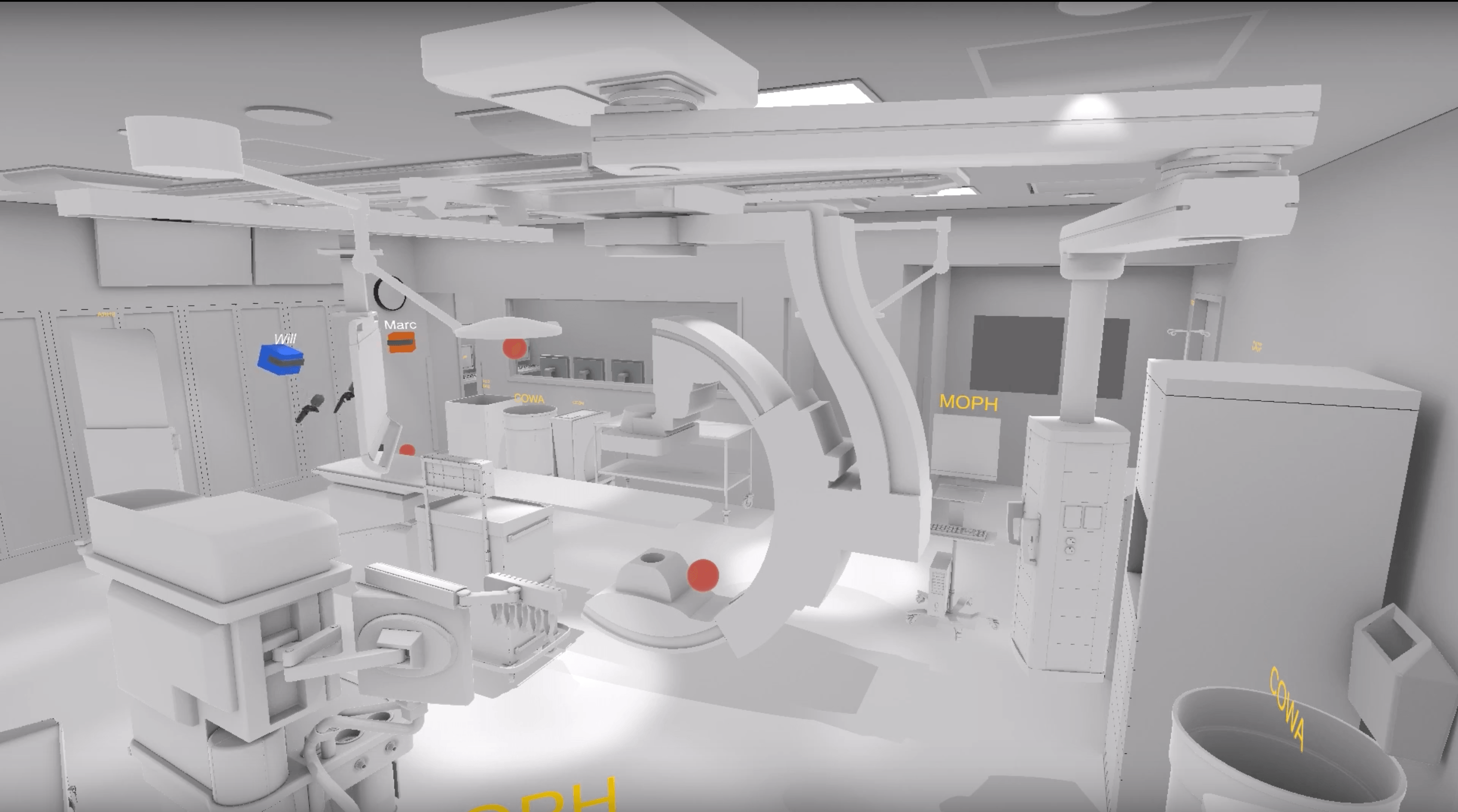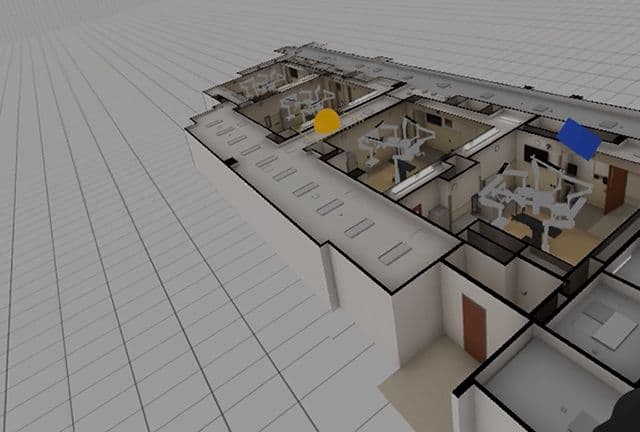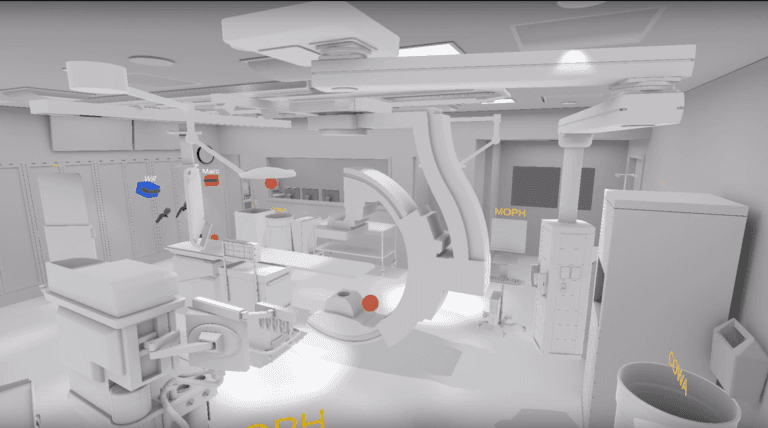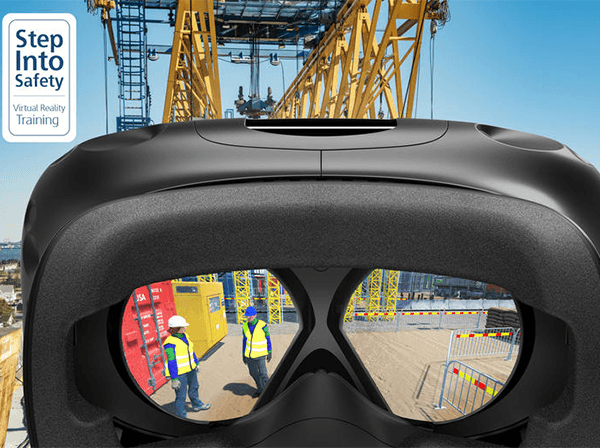
Como reduzir os altos custos e grandes riscos de projetos de AEC para a área da saúde? Mortenson descobriu um jeito. Ao simular de forma perfeita um novo hospital e centro cirúrgico em espaços 3D interativos, os clientes podem visualizar e interagir com instrumentos médicos cruciais, áreas de trabalho e tecnologias para garantir layout e ergonomia eficazes. Isso traz grandes benefícios como cuidado ao paciente simplificado, uma equipe mais eficiente e custos mais baixos.
RV interativa melhor o design de hospitais para Kaiser Permanente e outros
Ajude clientes a visualizar, vivenciar e aprovar novos projetos
VR: HTC Vive, Oculus Rift, Oculus Go, HoloLens, 360 video
4
Seattle e Minneapolis, EUA

Mortenson, em Minneapolis (MN), é uma empresa norte-americana, uma das 20 principais na área de construção civil, desenvolvimento e fornecimento de energia e serviços de engenharia. A empresa privada tem 5.000 funcionários, receita de US$ 3,8 bilhões e escritórios por todos os EUA. O conhecimento deles é muito procurado em construção de prédios comerciais, construção sustentável/ecológica, construção & design virtual (VDC), segurança em obras e muito mais.
Anos atrás, a Mortenson viu o valor de integrar tecnologias de visualização na oferta de design/experiência do cliente e criou a equipe Virtual Insights. Desde então, tornou-se especialista em usar o Unity para entregar experiências interativas em realidade virtual (VR) e vídeo 360 para uma variedade de necessidades dos clientes, como revisão do design de construções e iniciativas de vendas e marketing.
Dentre seus clientes de VR hospitalar estão o Centro Médico da Universidade de Washington e a Kaiser Permanente.
Os resultados:
Several years back, Seattle-based Will Adams and Marc Kinsman, Emerging Technologies Developers at Mortenson, saw the value of VR and 360 video for client projects. The first Oculus headset was just out and Adams got in on the ground floor knowing that Unity supported the platform.
“I was working on a design project for the Minnesota Vikings’ stadium. Even though my background is mostly in architecture and design (and some rendering), I was able to convince our project team to explore the idea of simulating the new space with a 3D rendering engine. At the time, I had little experience doing that but I just knew that it would look cool and be easy to output to VR.” Adams’ colleague, Marc Kinsman, was also on board “because Unity has a big supportive community, which meant it would be easy to learn.”
As Adams, Kinsman and colleagues on the Virtual Insights team got up to speed on Unity, their first virtual reality (VR) projects covered the basics of the new 3D space but not much more. “When we started, we were mainly focused on simple virtual projects that clients could walk around in, but over the past few years, we’ve realized how important it is to build interaction into these environments for user engagement.”
When the Virtual Insights team begins a VR project, they use many architecture assets and other resources, which they download from the Asset Store as needed and they also pull in a lot of models from other software such as 3ds Max, SketchUp, and Rhino. Internally, they collaborate a lot, so they are all networked in Unity, which speeds up development and problem-solving, but also means that their customers throughout the U.S. and in Europe can collaborate in real-time in these custom VR spaces.
Due to the wide-ranging client deliverables, the team favors a number of Unity features for their projects, such as the C# API. “We can do pretty much anything we want with the API. It gives us confidence when we’re doing proposals because even if the customer wants something we’ve never done before, we know the API will help us deliver it,” says Adams.
As their projects near the finish line, Kinsman says they like how effortless it is to output to 20-plus platforms. “We’ll jump between Oculus Rift and Oculus Go, the HTC Vive and HoloLens – and we’ve done some stuff for mobile devices too – so using Unity as the base allows us to ‘right fit’ the hardware for the project, and that’s been quite beneficial for us. From the same development platform, we can target whatever’s needed for the project. We don’t have to learn anything new and we can accommodate myriad client hardware and platform requirements.”
When they start a new project, the team typically upgrades to a new Unity version (they’re currently on Unity 2017.3). And as part of their ongoing R&D, they regularly install the latest versions to familiarize themselves with new features they want to try out, such as the Scriptable Render Pipeline (SRP). They’ll be migrating to Unity 2018 soon.

Doing around 20 Unity-based projects a year has given the team a lot of VR and 360 video experience for many top-tier clients, including Kaiser Permanente, the third-largest non-profit hospital organization in the U.S.
“Generally, within the medical arena, clients ask us for help with one major use case: to build a collaborative virtual mockup in 3D space,” says Adams. “Hospital project managers regularly tell us how difficult it is for surgical teams to understand how a procedure room will work for them before it gets built. If the PM can’t get the surgical team to engage and buy in on the project, the hospital inevitably needs to remodel right away because it’s not working for the team.”
For example, Kaiser Permanente was designing a new interventional radiology room and wanted to be sure that it would function smoothly for their medical team. Mortenson built the entire room virtually, according to specifications, so that everyone on the team could enter the space and interact with it in order to help finalize the design of a room they’ll be collaborating in for years. To that end, all the specified equipment was faithfully represented in 3D so the surgical team could reach out and manipulate the light booms, tables, and everything else that they typically interact with. Watch the Kaiser radiology room video to see it in action.
On another project, when Mortenson customers are designing or building a new treatment center or operating room, the client stakeholders – including project managers, doctors, nurses and technical personnel – typically want to interact with the different elements and make decisions about room dimensions, ergonomics, aesthetics, functional systems, and workflow efficiency very early in the project. “It gives them a great opportunity to spot, discuss and correct any problems,” says Kinsman. Watch how Mortenson created a collaborative work environment for the hospital wing of the University of Washington Medical Center.
Em projetos de revisão de design para clientes da área de cuidados da saúde, a equipe Virtual Insights da Mortenson agregou valor considerável. Graças a seus modelos em RV interativa, os clientes conseguiram economizar muito e evitar grandes falhas e frustrações antes que o concreto fosse derramado, paredes fossem erguidas ou materiais fossem encomendados, tudo sem ter que gastar tempo nem dinheiro com modelos físicos.
Por exemplo, Bob Dillon, gerente de projetos de capital do Medical Center da Universidade de Washington, disse "está sempre lá, você pode voltar e revisar suas decisões ou revisar como uma mudança pode impactar o resto do projeto". E Kinsman adiciona "nossos clientes sempre preferem o modelo em realidade virtual em vez do modelo físico por ser tão economicamente viável e informativo.”
A Mortenson também teve muito sucesso com a Kaiser Permanente. "Com a experiência em RV interativa e imersiva que criamos com Unity, a equipe do projeto pôde identificar deficiências no design, garantir os fluxos de trabalho mais produtivos e eficazes e conseguir aprovação importante de profissionais médicos. E mais importante: isso permitiu que a Kaiser Permanente ficasse dentro do orçamento e da programação, sem gastos financeiros e de tempo associados a modelos físicos", conclui Adams.
Por fim, não é surpresa que, por causa da flexibilidade de Unity, amplo suporte a plataformas e ecossistema extenso, como a comunidade colaboradora e a Asset Store, a plataforma tenha rapidamente se tornado a escolha da Mortenson para adicionar valor e processos de validação de design importantes nos projetos de clientes do setor médico


Em colaboração com a empresa sueca Skanska, a quinta maior empresa de construção civil do mundo, a agência criativa de RV e RA OutHere desenvolveu cenários de realidade virtual realísticos para o programa de treinamento de segurança para empregados da Skanska.

Mortenson, uma das maiores empresas de construção civil nos EUA, forneceu aos seus clientes a possibilidade de construir, modificar e rever designs em espaços 3D interativos. Aprenda como eles fortaleceram equipes e economizaram custos significativos.